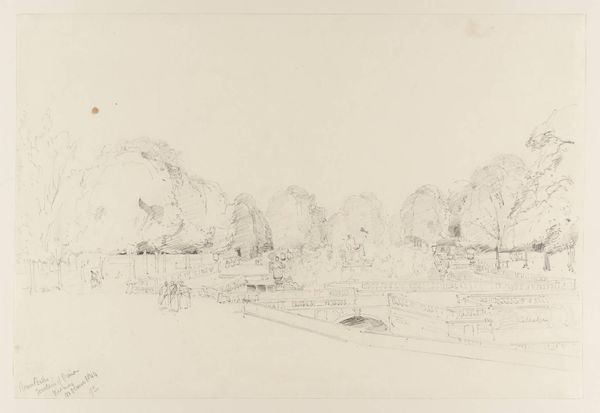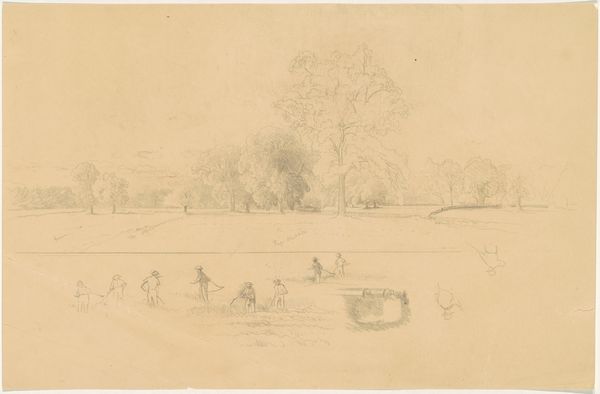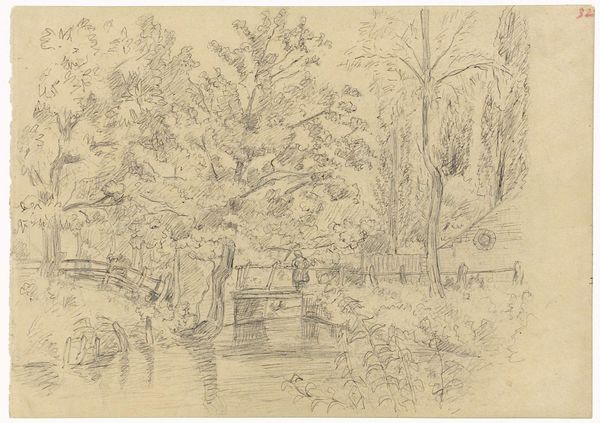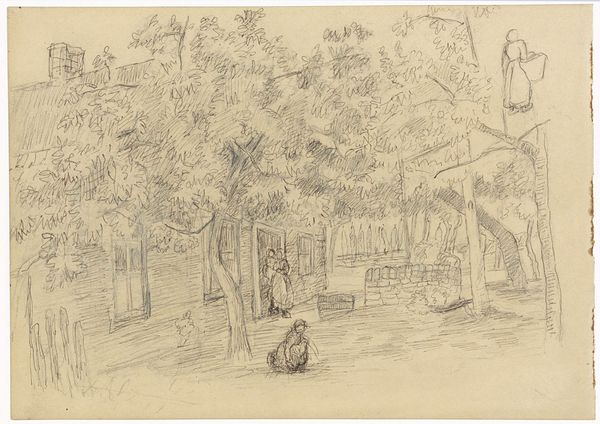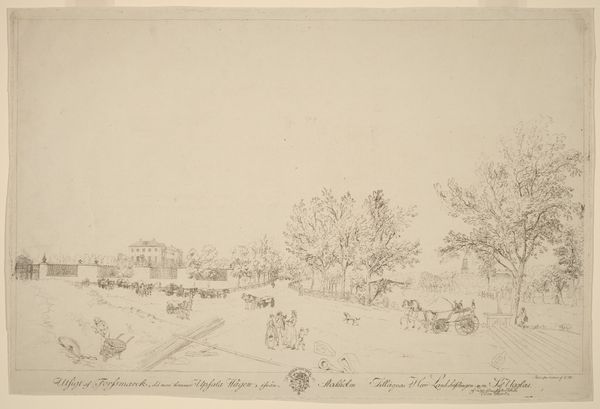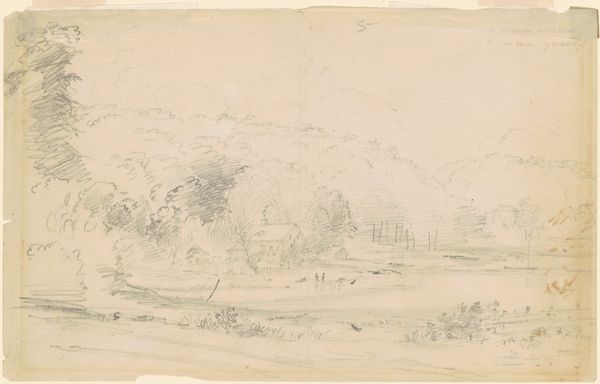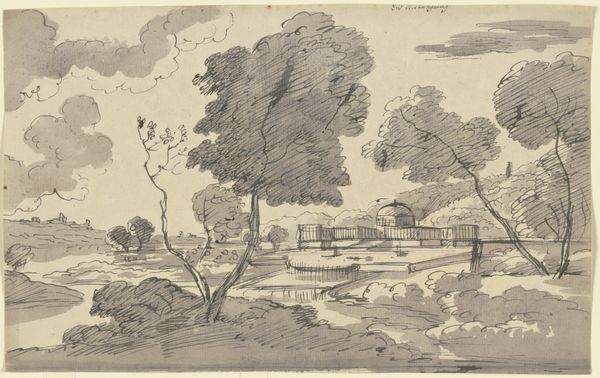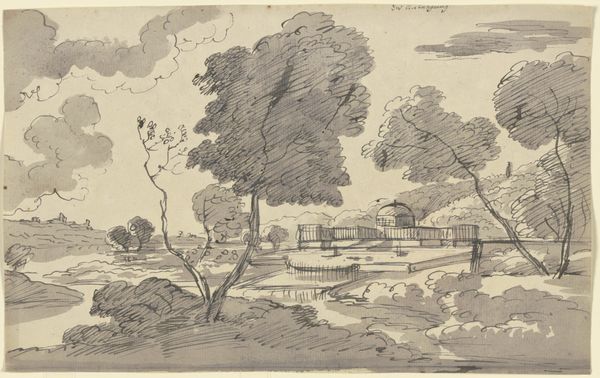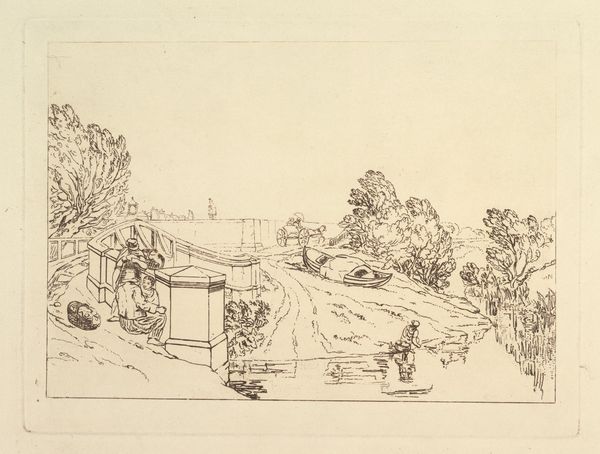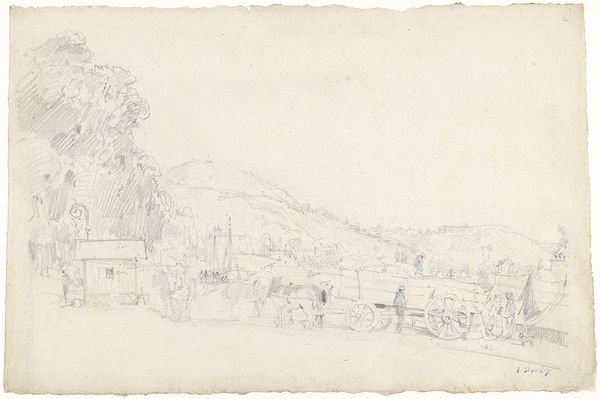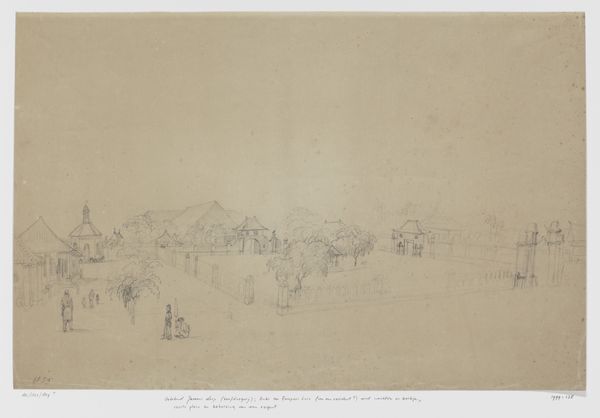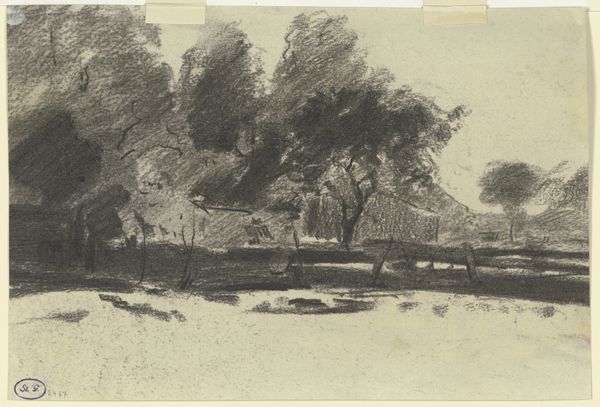
drawing, pencil
#
landscape illustration sketch
#
drawing
#
pen sketch
#
landscape
#
personal sketchbook
#
sketchwork
#
ink drawing experimentation
#
pen-ink sketch
#
pencil
#
pen work
#
sketchbook drawing
#
cityscape
#
storyboard and sketchbook work
#
realism
#
initial sketch
Dimensions: height 222 mm, width 383 mm
Copyright: Rijks Museum: Open Domain
Editor: Here we have "In de tuin van het Luxembourg, Parijs," likely from 1819, created by Henry Edridge, using primarily pencil and pen and ink. It feels like a quickly captured impression, almost like a fleeting memory of the garden. What do you see in this piece? Curator: I'm immediately drawn to the process itself. Look at the layered strokes of pencil and ink. It speaks to a mode of artistic production rooted in observation and documentation, where the labor of sketching is integral. This wasn't just about representing a scene; it was about engaging with the very act of seeing and recording. The materials, readily available and portable, underscore the accessibility of art-making during that time. Editor: So you’re saying the value lies in the ‘making of’ and materials more than in what is depicted? Curator: Precisely. Think about the social context: was this for personal use? For sale? How did Edridge obtain his materials? The rise of commercial art supply companies would have shaped artistic practices. Even the paper itself tells a story—its quality, its sourcing, its potential connection to wider networks of trade and consumption. What do you make of how the labor seems intentionally left visible? Editor: That’s interesting. The visible work…it makes it feel less “precious,” more immediate and honest, as if inviting us into the artist's process, democratizing the act of art creation. Curator: Yes! It blurs the line between 'high art' and a more quotidian form of making. We're not looking at a polished, idealized scene; we're seeing the material reality of its creation. This opens a dialogue about who has the right to create and how that creation is valued. Editor: I see the drawing in a whole new way now! It's less about the beautiful garden and more about the conditions of its artistic production. Curator: Exactly. Looking closely at the materials and processes reveals so much more about the work than just its surface representation. It reveals the network of production that facilitated the sketch in the first place.
Comments
No comments
Be the first to comment and join the conversation on the ultimate creative platform.
